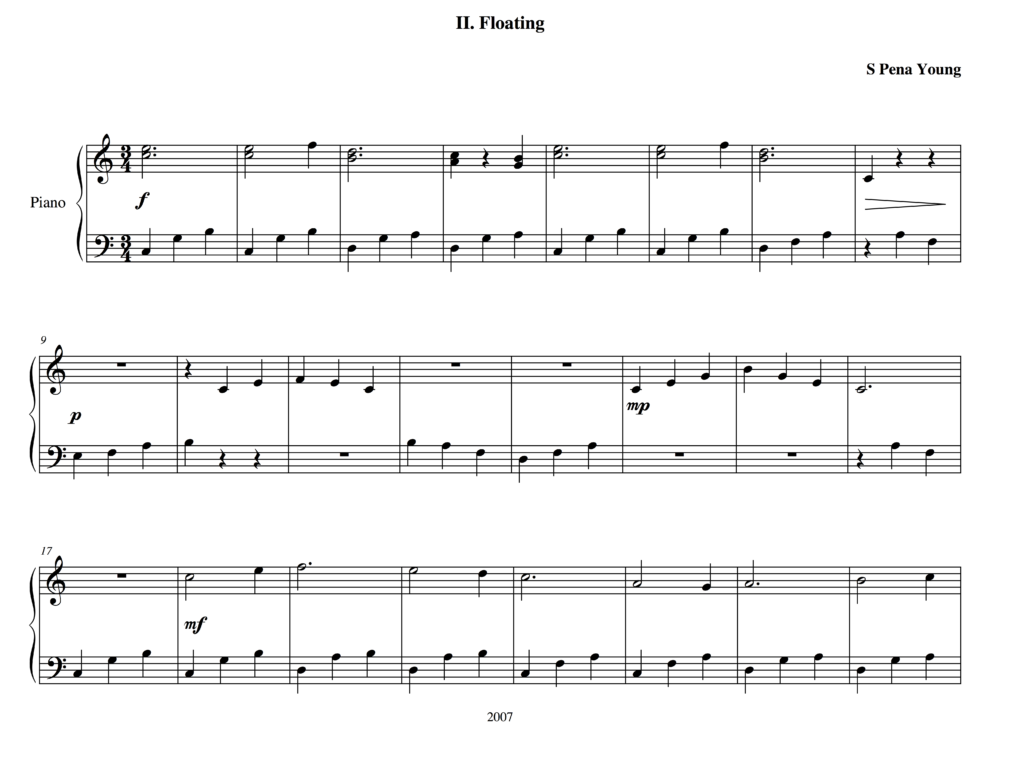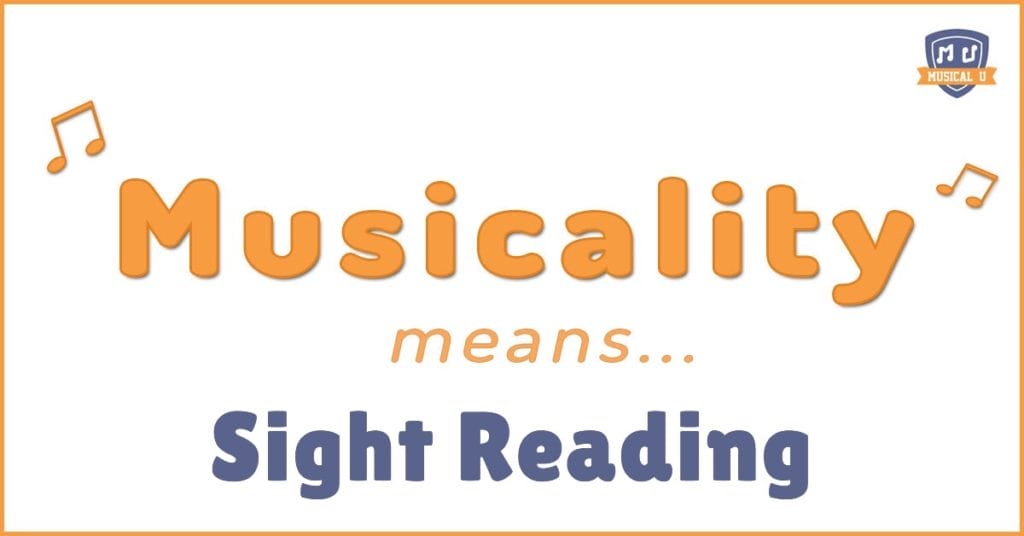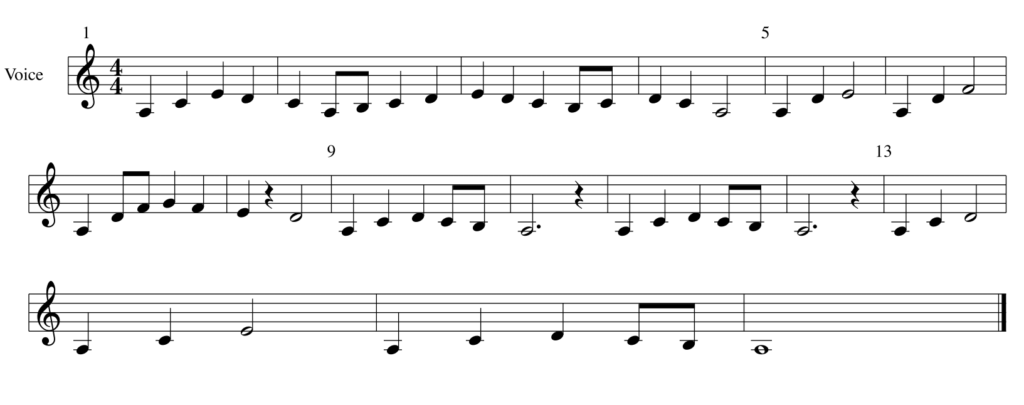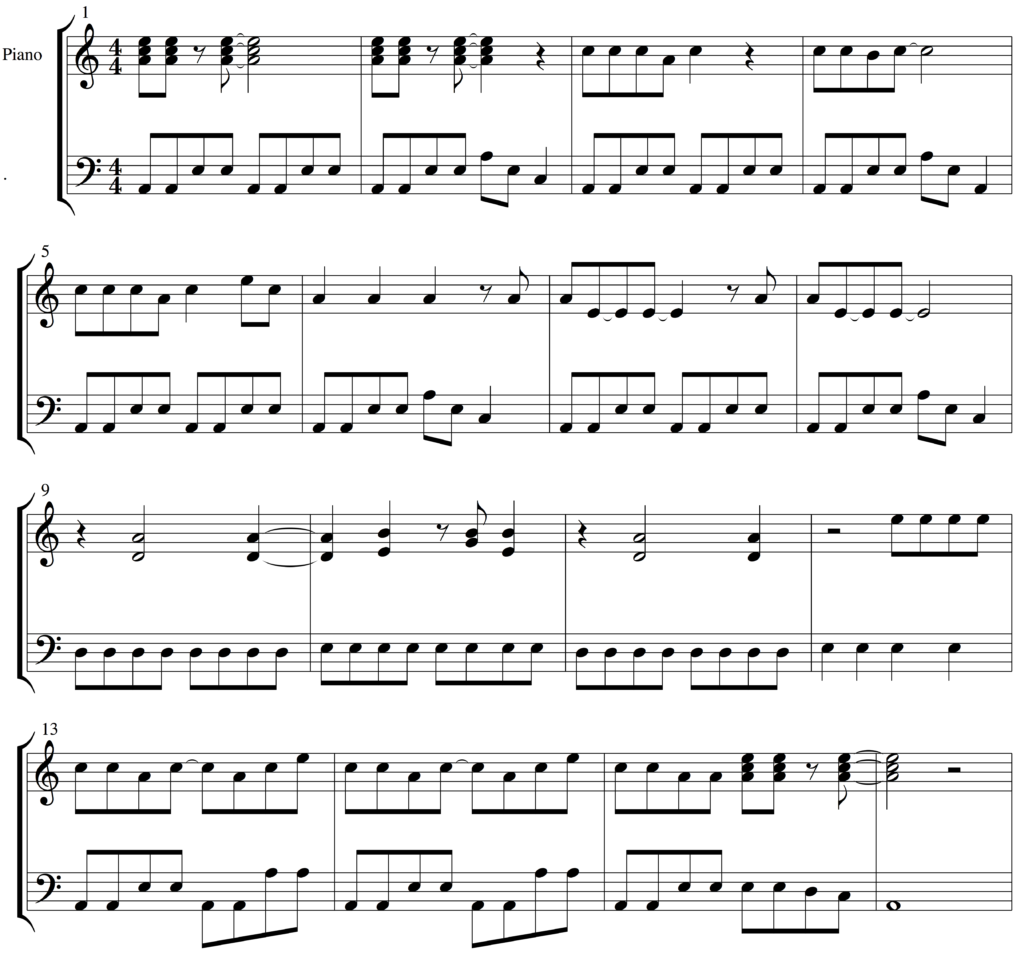The lights in the hall blind you. The slightly inebriated audience is excited. It’s your first time playing with the band, but you are just filing in for a player who got sick at the last minute. It’s ten minutes till showtime and you still haven’t seen the book for tonight. Minutes tick by and the drummer shoves a mass of sheet music your way.
You race to your spot on the stage to raucous applause. Quickly you glance through the first page, just in time to catch beat one from the lead instrumentalist. You’ve never seen the music before this moment, haven’t even played with this group before, but you’re a pro and play your heart out. And why?
Because you have mastered the skill of sight reading.
“Sight reading is as much an attitude as it is a skill.” – Saxophonist David Hughes
What is Sight Reading?
In the simplest terms, sight reading involves playing through a piece of music that you have never seen before. You have never practiced the piece, or prepared the work for performance. The piece might be easy or difficult, it might be in your range or a little beyond your skills, and can be in any style.
Watch pianist Tom Brier sight read the Super Mario World Ending:
Musicians run into sight reading in a number of situations, from filling in for a missing player in a live performance, to recording studio scenarios, to music exams. Music colleges require their students to sight read regularly, and every serious player who wants to build high levels of musicality practices sight reading on a daily basis.
Learning how to sight read well is a key to good musicianship. Start with learning the basics like reading music, music theory, rhythm, and scales. Then you can start working on sight reading as a part of your daily practice routine. If you already know how to read music or play a rhythm in time, then you are already halfway there!
To sight read, musicians must:
- Read music with high proficiency
- Play their instrument or sing well
- Be familiar with common musical rhythmic, melodic, and harmonic patterns
- Have confidence in live performance
- Listen to other members of the ensemble
But it is difficult to practice sight reading? Not really. Try out this simple example below.
Exercise 1: Easy Sight Singing
Follow the steps below when you are sight reading.
- Look at the score below
- If you need to, play the first note on a piano or guitar to find your first pitch
- Record with your smartphone or other device
- Sing through the simple exercise on the neutral syllable “la”
- Listen to the score audio to check for accuracy or play the melody on an instrument
What Are the Benefits of Sight Reading?
But what if you play by ear? What’s the point of learning how to sight read?
Well, while there are some incredible musicians worldwide that don’t read sheet music, the truth is that learning how to read music and sight read has many incredible benefits for musicians, both musically and professionally – and now is a great time to start exploring good musicianship in sight reading.
Here are just a few of the benefits of sight reading:
1. Explore New Music That You Have Never Read Before
One of the biggest benefits to learning how to sight read is that it allows you to explore new music from anywhere. As long as it is written down, you can play it through, and learn new music.
This is great for any musician, whether you sing in a choir, play in a band, or perform with a symphony orchestra. With the internet at your fingertips, you can find sheet music in any musical genre from any part of the world, download the music, and sight read through scores.
2. Improve Your Hand-Eye Coordination
Because you have to concentrate on reading the music in front of you, instrumentalists can improve their hand-eye coordination when they sight read.
3. Spend Less Time Practicing
When your musicianship skills include good sight reading, you will find that you spend less time in the practice room and in rehearsals. Why?
Because you are accustomed to reading new unfamiliar material on a daily basis, reading through your regular music with your band, choir, or even on your own will seem easier in comparison. This can result in shorter rehearsal times, which in some cases, might save time and money.
4. Broaden Your Range of Styles
When you practice good musicianship through sight reading daily, you will broaden the range and difficulty levels of what you play. Many times musicians have a few styles that they love, or a few riffs that are their go-to solos in a jam.
If you practice sight reading, you get exposed to musical ideas and techniques that you might not be if you stuck to your favorite music. If you are a jazz player or rock musician, then pick up some pop or classical music. Are you a classical violinist? Tune your ears into some ragtime, classical Indian music, or bluegrass for a change of pace and play on through. You won’t play perfectly the first time, but you still will develop your musicality just by sight reading.
5. You will Be More Marketable and Have More Musical Opportunities
Because you can sight read, other musicians will know that you are someone that can be called in a pinch. This is great for recording studio situations, when you are playing or singing with a group for the first time, or just when you are trying to explore an unfamiliar musical opportunity.
Finding Music to Sight Read
So you now that you’ve decided to begin honing this skill, where do you find material to learn with?
With the internet at your disposal, there are some fantastic sheet music resources for every instrument and genre. All you have to do is start browsing…
Exercise 2: Explore the Petrucci Library
One of the greatest free sheet music resources today is the Petrucci Library, an online library of public domain sheet music covering thousands of composers, every region from around the world, and for almost any instrument, choir, or ensemble. Explore the Petrucci Library for this exercise.
- Go to the Petrucci Library
- Search for your instrument or voice type
- Out of all of the results, select a composition at random
- Download the score (or play from your device)
- Play or sing through the composition once, from beginning to end, if possible
- Make a note of difficult sections
- Play through one more time
- Find two or three other random pieces
- Use the Petrucci Library and other resources to practice your sight reading every day
You can find examples of free music at the Petrucci Library like this simple piano excerpt from Turtle Songs Suite by S. Peña Young for beginner piano.

Besides the Petrucci Library, there are many other places that you can find free or affordable sheet music:
- Scribd – Search the popular website for free and affordable sheet music
- Archive.org – This online database endeavors to archive everything on the Internet, including thousands of free scores
- New York Women Composers Searchable Sheet Music database – Search the NYWC online database by instrument, voice type, and difficulty level to find free and affordable score by New York composers
- Noteflight Public Scores – The popular music scoring software has a long list of arrangements and sheet music by Noteflight users
How to Practice Sight-reading
If you have never practiced sight reading before, you might need some direction the for the first time you sight read. Follow these steps, using them as a warm-up or exercise on a daily or weekly basis:
- Find new music for your voice or instrument that you have never played through before
- Set the metronome to a slower setting than required (anywhere from 50-80% of the actual MM marking)
- Play through the piece once, aiming for the highest accuracy possible
- Record your playing
- Listen to the recording
- Listen for any problem areas or techniques that stumped you
- Play through the piece all the way through a second time, trying to fix problem areas and attempt to be more musical in your playing
Professional Tip: If you keep making the same types of mistakes when you sight read, take the time to practice just that section. It might be a scale that you need to practice until it is second nature, maybe a chord progression that is a little difficult, or a note that is just beyond your range. Isolate and practice these sections until you are comfortable playing through them. That is how you build your musicianship.
Exercise 3: Simple Vocal Sight-Reading
Take the time to practice some simple sight singing in this exercise, even if you are an instrumentalist – developing sight singing skills enormously helps build your musicality! For the purposes of this article, we will just use the neutral syllable “la” as a starting point.
- Look at the score below
- If you need to, play the first note on a piano or guitar to find your first pitch
- Record with your smartphone or other device
- Sing through the simple exercise on the neutral syllable “la”
- Sing from beginning to end
- Listen to the Score Audio to check for accuracy or play the melody on an instrument
As you listen to your recording and compare it to the score audio, ask yourself:
- Did I sing the correct pitches?
- How did I do with rhythm?
- Did I follow dynamics?
- What did I do right?
- What do I need to work on?
For more advanced sight reading, use solfa. Find more resources on solfa and sight reading with these helpful articles:
Exercise 4: Simple Keyboard Exercise
In this example, you can play on a keyboard. While both hands are provided, if you need to just practice with one hand, then play only the melody in the treble clef. Then try to play the left hand by itself. Once you are comfortable, try to read it through once with both hands. If you play a different instrument, try to play the melodic line on your instrument.
- Look at the score below
- Record with your smartphone or other device
- Play the exercise from beginning to end
- Listen to the Score Audio to check for accuracy or play the melody on an instrument
How did you do on this piano exercise? Were you able to play with both hands together, or did you have to play the piece hands separately? What are some skills that you need to work on to learn how to read through a piece like this?
Play On Sight
How did you do on your musical exercises? If sight reading is difficult for you, there is a supportive community at Musical U that can help you develop your musicality. The Musical U community has a unique blend of everyday musicians from students to professionals and everyone in between. Additionally, Sight Reading Mastery offers a targeted and personalized way to hone this particular skill, with sheet music, a performance tracker, and expert help included. Check out their guest post on sight reading music in a choir!
Some of the resources below might be helpful as you develop your musicianship through sight reading. Find even more great online sight-singing resources at Musical U, including helpful articles to help develop your musicality like:
- Sight Reading Music: Why Do It and How to Improve
- Solfa and the Score: Sight-Singing
- Beginner Solfa Sight-Singing Practice Exercises
- 5 Ways to Improve Your Sight Reading Skills
Had a tough time sight reading? Keep up the hard work. Start slow, maybe with easier pieces once or twice a week. Eventually, you will find that playing through music will become easier, and who knows, you might eventually fall in love with sight reading!
You don’t have to tackle learning the skill of sight reading alone! A membership at Musical U provides you with a supportive network of fellow musicians learning the same skill as you, as well as expert help for when you get stuck.










